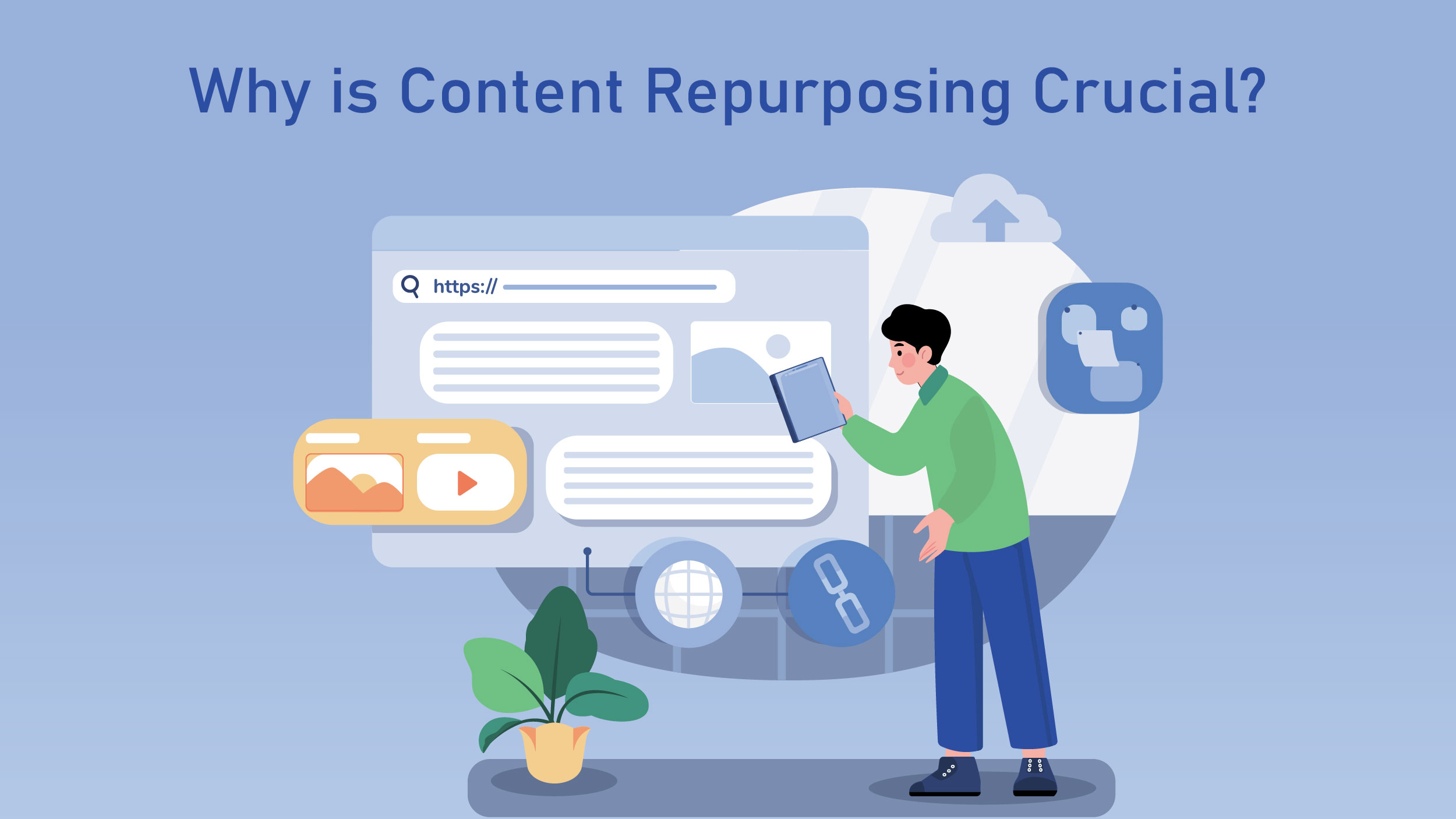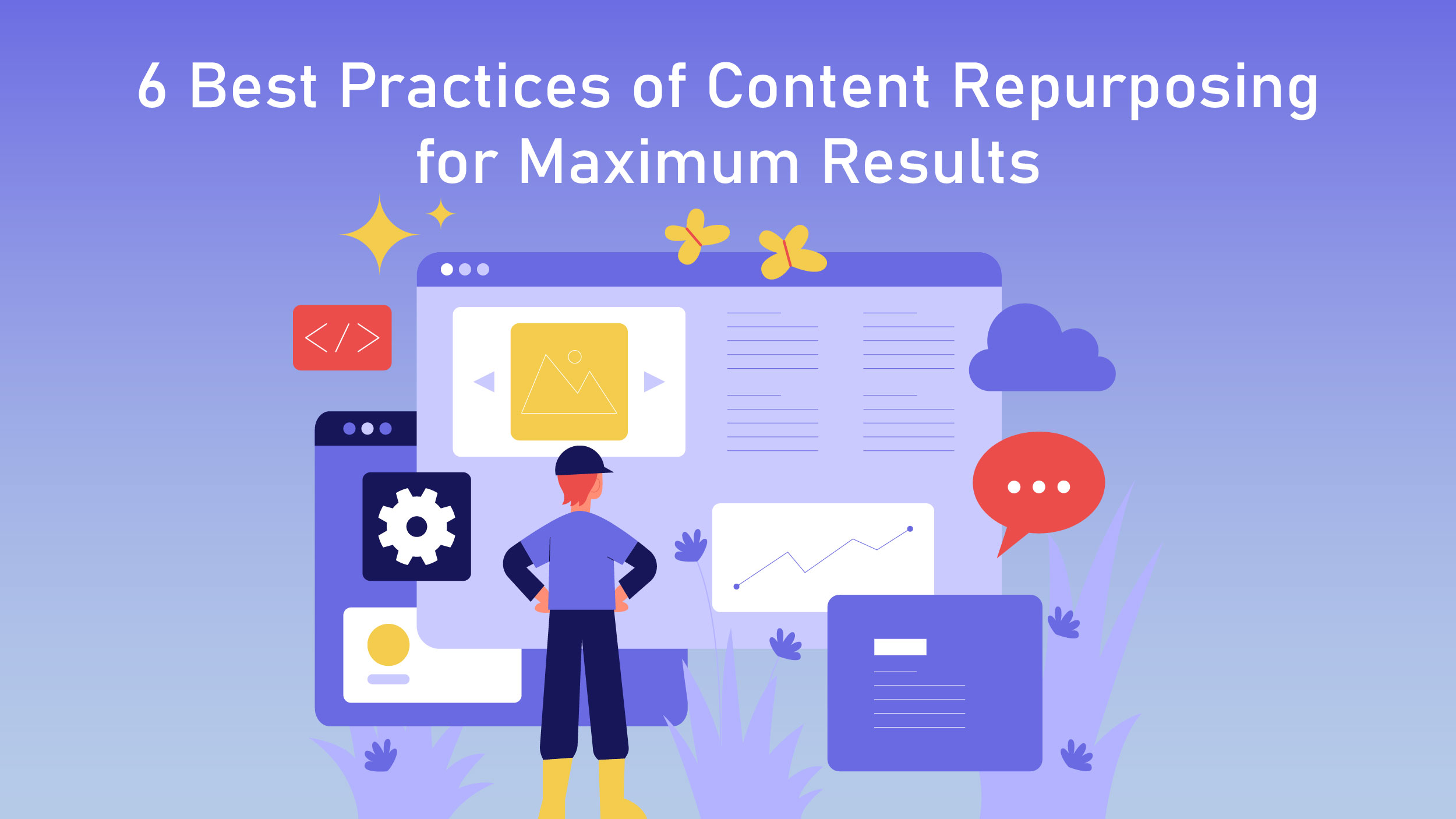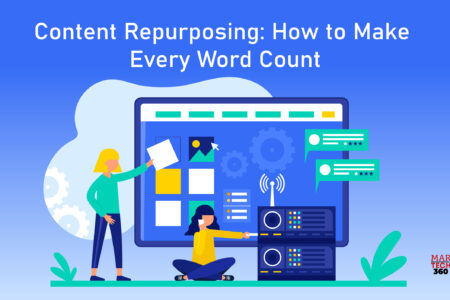If you’re a marketer, you’re familiar with the struggle of constantly coming up with fresh, engaging content to capture your audience’s attention. Although, there’s a solution that can make this process much more manageable: content repurposing. It allows you to break free from the constant search for new ideas and empowers your creativity to shine.
You might initially think of repurposing content as a sneaky shortcut, but that’s not the case. This technique involves taking your existing top-notch content and giving it a fresh makeover for new platforms. In this article, we’ll outline the basics of content repurposing, highlight how it could benefit your business, and delve into specific tactics to refurbish your existing content. Plus, we’ll share tips on how to produce new content while already contemplating future repurposing.
What is Content Repurposing?

As said earlier, you may find the concept of repurposing content a bit like a shortcut if you are not quite familiar with the technique. The last thing you’d want is for your audience to perceive your content as being repetitive or have the impression that you don’t put effort into crafting unique material for every platform. You might also assume that repurposing content equates to transforming someone else’s work to suit your brand message.
However, repurposing content is far from that. You’re not just recycling old content, you’re bringing new life to something that you and your team have intentionally crafted. This approach assures that all your audience segments get the most value from what you can bring to the table.
Why is Content Repurposing Crucial?
Simply put, repurposing content has the primary advantage of making content much easier to scale.
So basically, you don’t have to start from square one each time you create a post, film all the videos, or design every single infographic. Alternatively, you can creatively repurpose a fresh piece of content into posts, videos, social media updates, webinars and so much more. One of the charming aspects of repurposing content is that it offers a fresh set of clients an opportunity to engage with your content. Let me break it down for you.
Creating a blog post can certainly give you a presence online but imagine if that same blog post could also be repurposed into an email newsletter or even a how-to YouTube video. Suddenly, you’ve tripled your content and potential outreach. This means that you’re not just appearing on one platform, but three, each with its own unique and diverse audiences.
Also Read: Mobile Miracles: Creating Seamless Customer Journeys
6 Best Practices of Content Repurposing for Maximum Results

1. Tailor Your Content for Different Formats
To make your repurposed content truly shine, it’s essential to customize it to suit the specific format you’re utilizing. This might require some effort and creativity.
For instance, simply reading a blog post aloud in front of a camera might technically result in a video, but it’s likely to be rather dull. On the other hand, taking an article as the foundation for a video can be quite effective, especially if you incorporate sound effects, transitions, and other elements to enhance the viewer’s experience. The same principle applies to various other formats like audio, slide decks, infographics, white papers, case studies, and more.
For repurposed content to truly excel, it must be adjusted to suit the unique characteristics of each format.
2. Divide Your Content into Smaller Pieces
Another effective way to repurpose your content is by breaking it down into smaller, more digestible pieces and then sharing these on social media. This method can be applied to keynote presentations, lengthy blog posts, podcast interviews, and more. Approximately 62% of US consumers aged 12 and older listen to podcasts, offering an opportunity to broaden your audience.
The key concept here is that your comprehensive content likely contains numerous smaller nuggets of valuable information. All you need to do is showcase the most compelling bits on your social media platforms. This way of repurposing content for social media could potentially lead to leveraged customers.
3. Embrace Visual Content
One of the simplest ways to repurpose your content is by transforming your existing content into visual formats. Chances are, most of your older content is text-based blog material. If that’s the case, you have a wealth of untapped potential for visual content. Given that 87% of marketers attribute increased traffic to video content, it’s definitely a format worth exploring.
4. Reuse Components across Different Content
Many people fall into the trap of believing that once they’ve covered a topic or idea, they can’t revisit it. Fortunately, that’s not the case. You can certainly discuss the same tips, techniques, strategies, or approaches across various pieces of content, even if they share the same format.
5. Repurpose Content for Guest Posts
Content repurposing offers an excellent opportunity to expand your guest posting efforts. To clarify, I’m not suggesting that you should simply recycle the exact same content for guest posts, as this can damage your relationships with other blogs in your niche.
Instead, you can take an existing strategy or concept that you’ve previously discussed and use it as the basis for your guest post. As long as your content remains unique and introduces fresh examples and perspectives, most bloggers will be more than willing to publish your guest post on their site.
6. Repost Your Pre-existing Content
The most straightforward method for repurposing your content involves simply re-sharing it on blogging platforms such as LinkedIn Articles and Medium.com.
This approach may not yield as significant results as crafting something entirely new or refining your existing content. After all, republishing essentially duplicates your content.
However, republishing, also referred to as “content syndication”, offers a straightforward means to increase the visibility of your content and attract additional readers.
Final Thoughts on Content Repurposing
All said and done, you’re a content creator for one reason – you believe you can add value to your audience’s lives. Although, crafting high-quality content doesn’t happen instantly. It’s a process that requires thoughtful time, attention, and resources, which sometimes can become repetitive and exhausting. This is where refreshing your existing content comes into play, not as an alternative to generating new content, but as an additional strategy. You can also opt for content repurposing services if you lack in-house talent.

